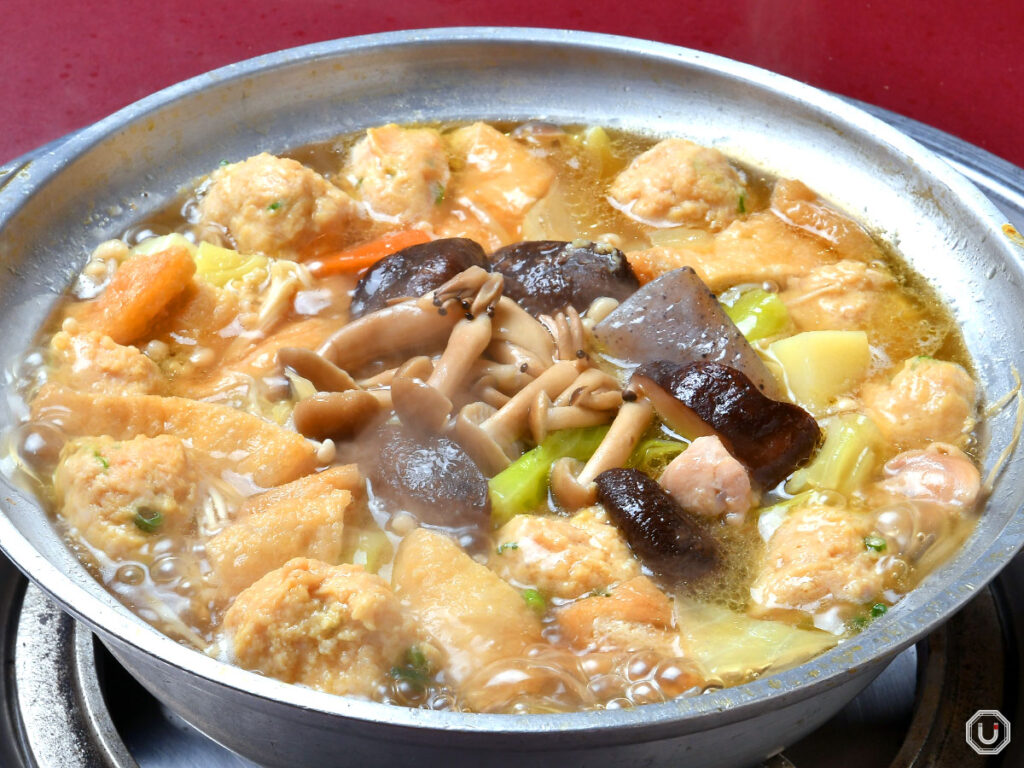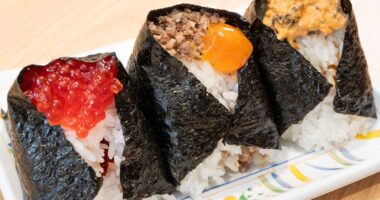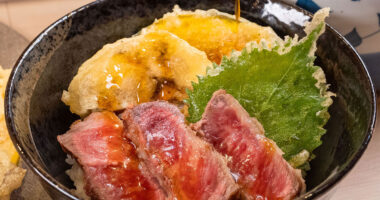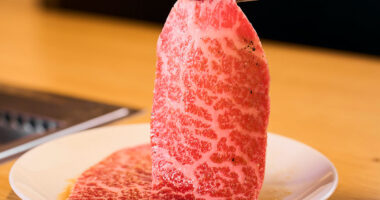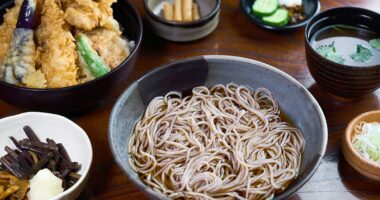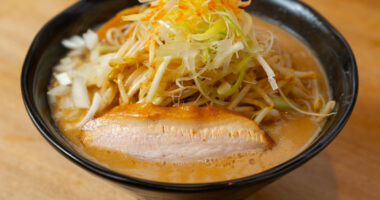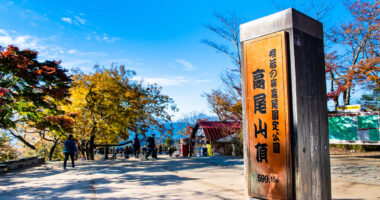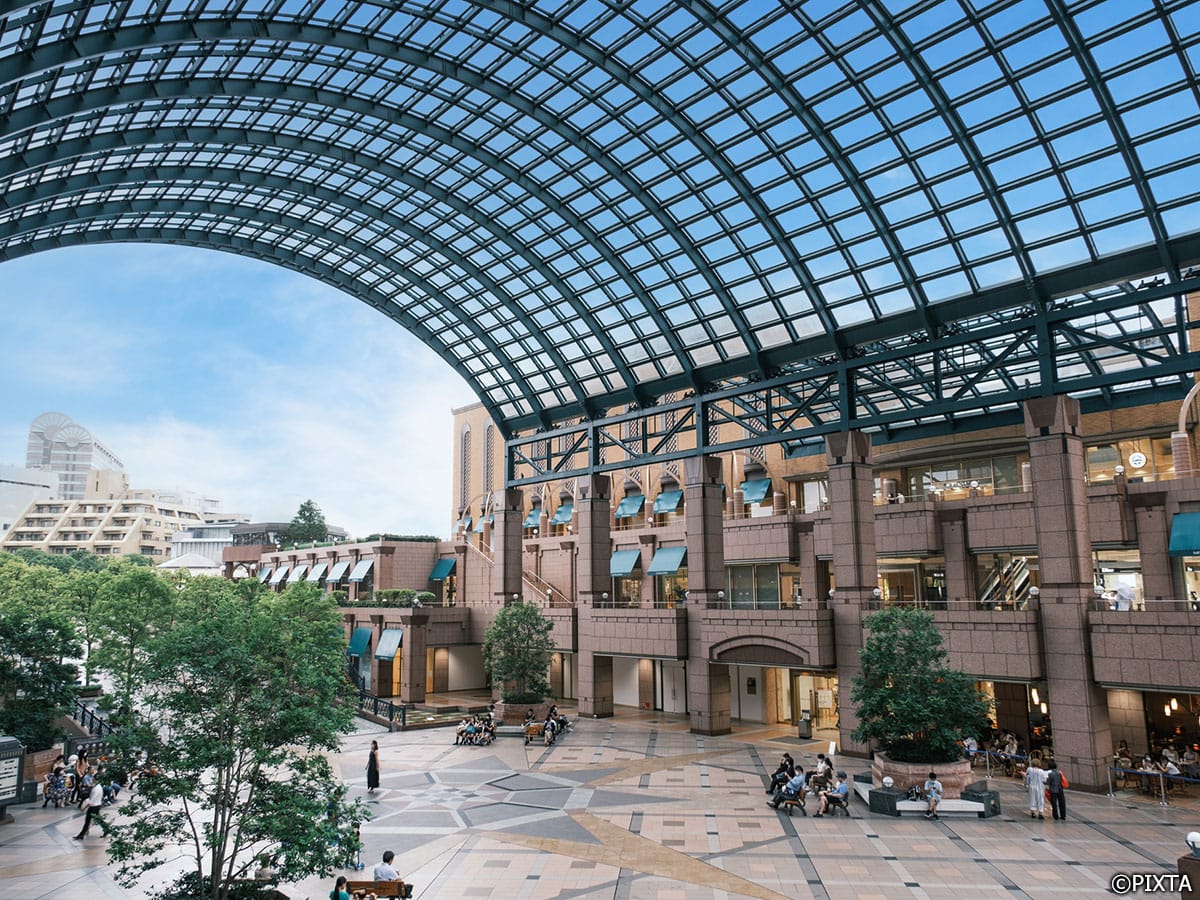Chanko nabe is a traditional hot pot dish deeply intertwined with Japan’s sumo culture.
For sumo wrestlers, nutritional balance has always been paramount in their diet to maintain and strengthen their physiques.
Japanese hot pot dishes, which are mainly built around protein while incorporating a variety of ingredients, are truly ideal meals for sumo wrestlers. Born from this tradition, chanko nabe has also become a beloved dish at family dining tables.
“Ryotei Tokibayama” is a long-established traditional Japanese restaurant founded by a former sumo wrestler, where you can enjoy authentic chanko cuisine in a beautifully preserved Japanese-style building.
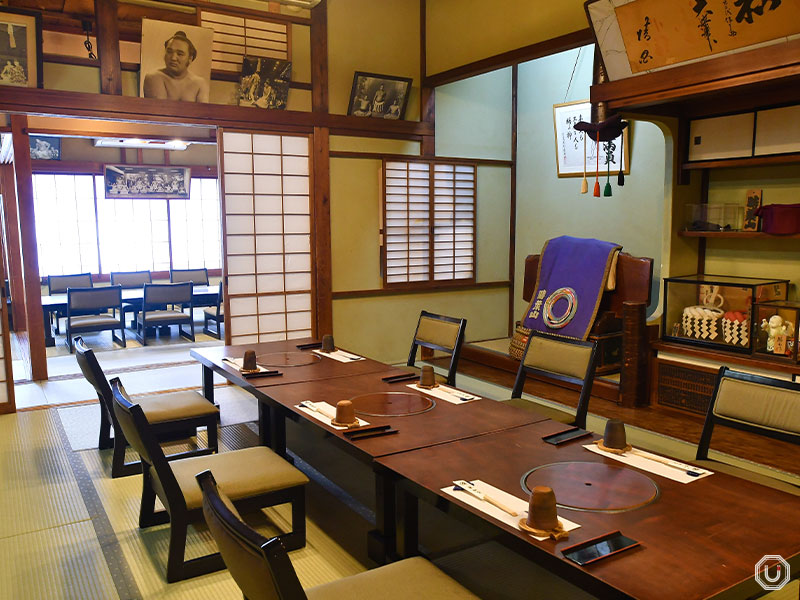
The communal style of gathering around a large pot to eat chanko nabe is said to have become popular around the early 1900s.
The general cooking method involves simmering chicken and various types of vegetables, tofu, and other ingredients in soup flavored with soy sauce or miso, based on dashi or chicken broth.
In sumo stables, chanko nabe is served according to rank—higher-ranked wrestlers are served first, while lower-ranked wrestlers serve them and eat afterwards. This tradition also plays a role in strengthening community bonds through the shared experience of eating from the same pot.
Today, as chanko nabe has become more popular, strict etiquette is no longer observed in restaurants or at home, and the focus is on the joy of sharing a hearty meal.
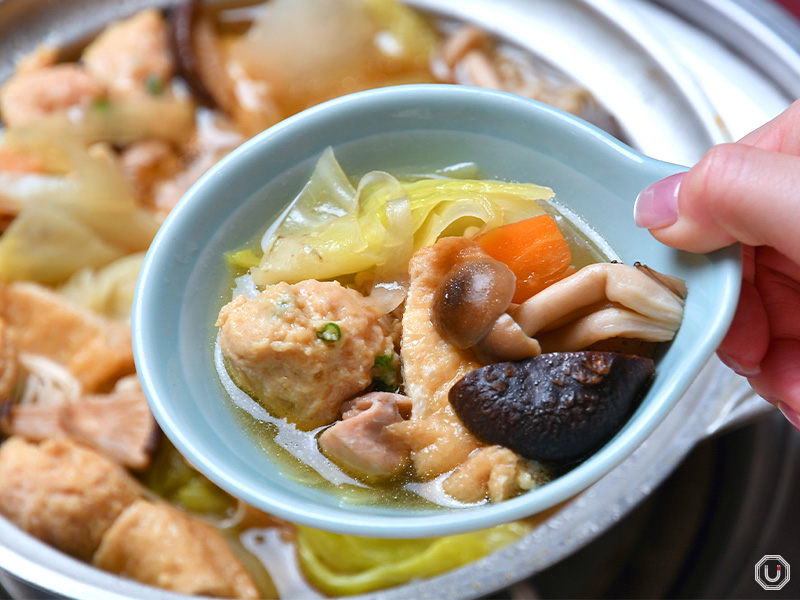
Ryotei Tokibayama was founded by the former sumo wrestler known Tokibayama. Known for its traditional chanko nabe, the restaurant also serves seasonal Japanese course meals crafted from carefully selected ingredients. It’s loved by celebrities and gourmets from all walks of life.
Housed in a traditional Japanese building constructed in the 1940s, the interior includes a variety of seating styles such as tatami rooms, sunken kotatsu, and table seating. All rooms are private.
Some rooms even display authentic sumo memorabilia, such as a real mawashi (sumo loincloth) worn by the founder during his wrestling days.
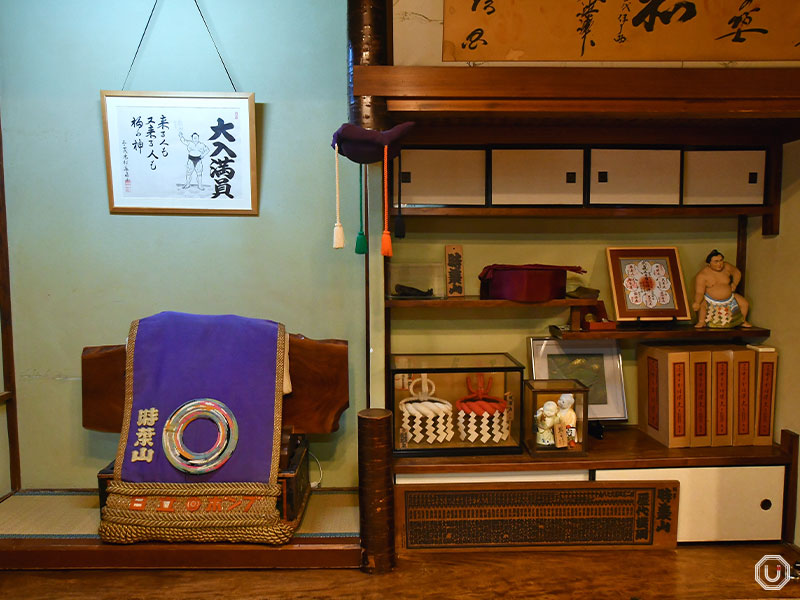
Sashimi platter and the signature “Avant-Garde Tuna” in lavish course
To fully enjoy the experience at Ryotei Tokibayama, the “Omakase Course” is highly recommended.
The content of the course varies depending on the price. The course introduced here is priced at 9,000 JPY per person.
It begins with an appetizer made from seasonal vegetables.
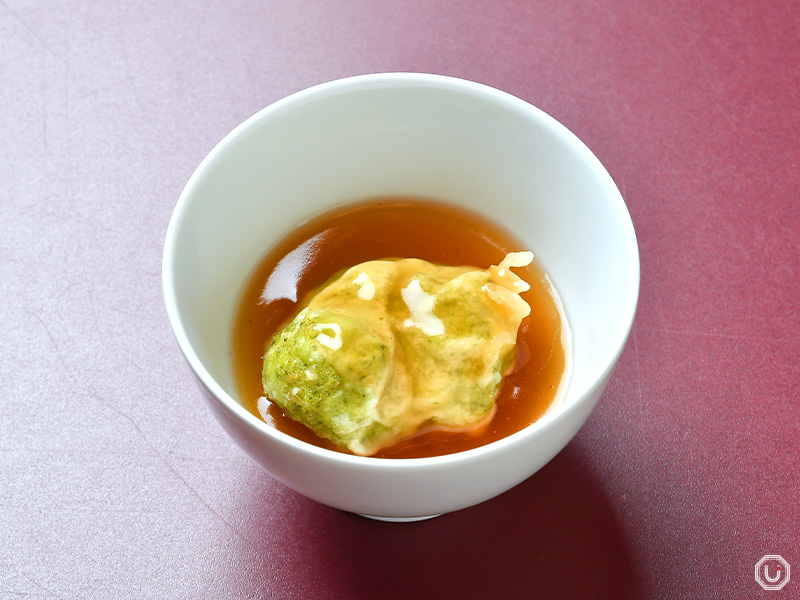
“前菜(豆腐に仕立てた山菜の天ぷら),” Appetizer (Mountain Vegetable Tempura Styled as Tofu) *content varies by day
Next up is the “Whole-Fish Sashimi Platter,” a stunning dish that captivates with its impressive presentation and beauty.
A whole fresh fish is artfully arranged, and the delicate knife work and vibrant colors are sure to delight the senses.
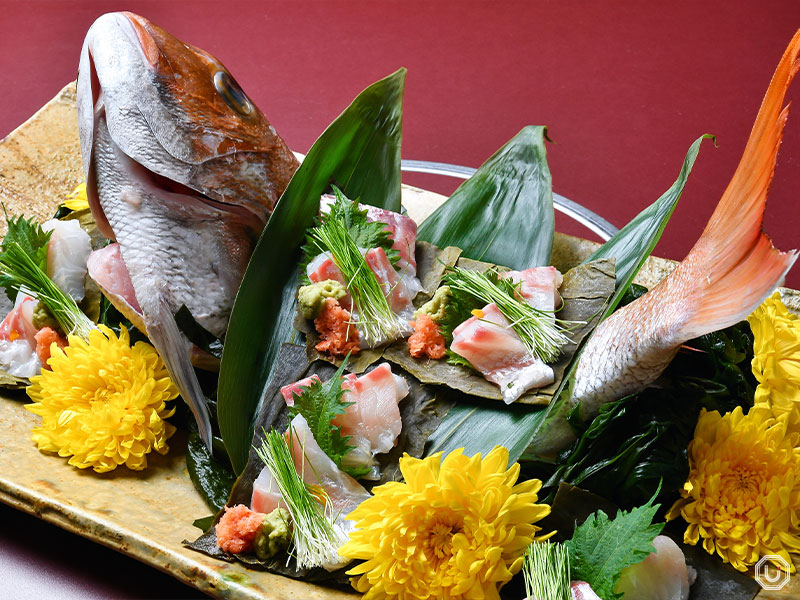
“鮮魚の姿造,” Whole-Fish Sashimi Platter *content varies by day
The current owner, Toshiya Haruki, son of the founder, is a skilled chef and avid fisherman, so well-versed that he’s even appeared on fishing TV shows.
He’s dedicated to serving seafood at its peak freshness, whether it’s fish he’s caught himself in waters not only around Kanto but also Kyūshū, or seasonal seafood carefully selected with a professional eye.
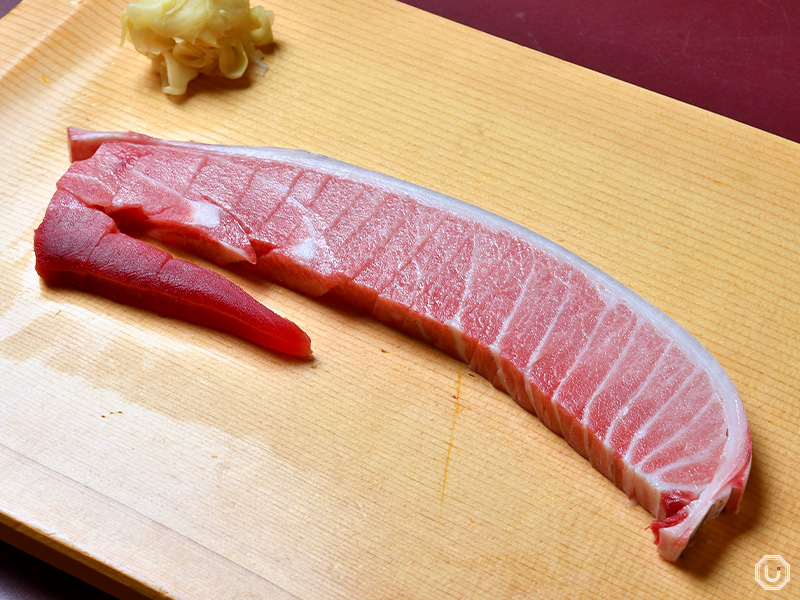
“アバンギャルドマグロ,” Avant-Garde Tuna *photo shows serving for 3, parts vary by day
Following the Whole-Fish Sashimi Platter, the next dish is the “Avant-Garde Tuna,” which is just as famous as the restaurant’s chanko nabe.
Only natural, seasonal tuna is used, cut in ways that highlight the unique characteristics of each part. The ruby-red flesh is visually striking.
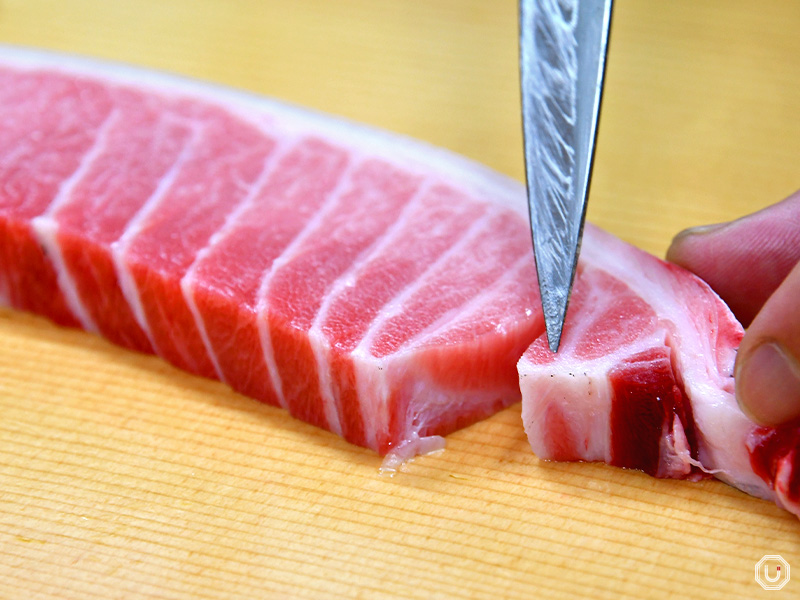
Start by enjoying it as sashimi, with soy sauce and wasabi. The rich umami unique to natural tuna spreads across the palate.
Next, lightly grill it over the small charcoal grill provided at each table, and sprinkle with a pinch of salt. The sweet melt-in-your-mouth fattiness leaves a delightful last impression.
Try and enjoy both styles of eating it.
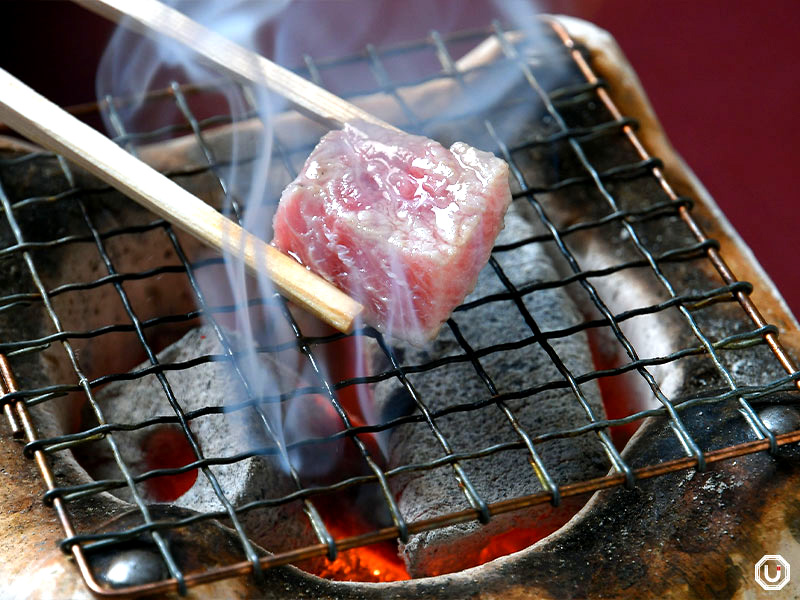
Premium melt-in-your-mouth wagyu
Next served is a cut of Fukushima Beef—either ichibo (aitchbone) or rump—from a top-grade brand of Kuroge (Japanese Black) wagyū raised in Fukushima Prefecture.
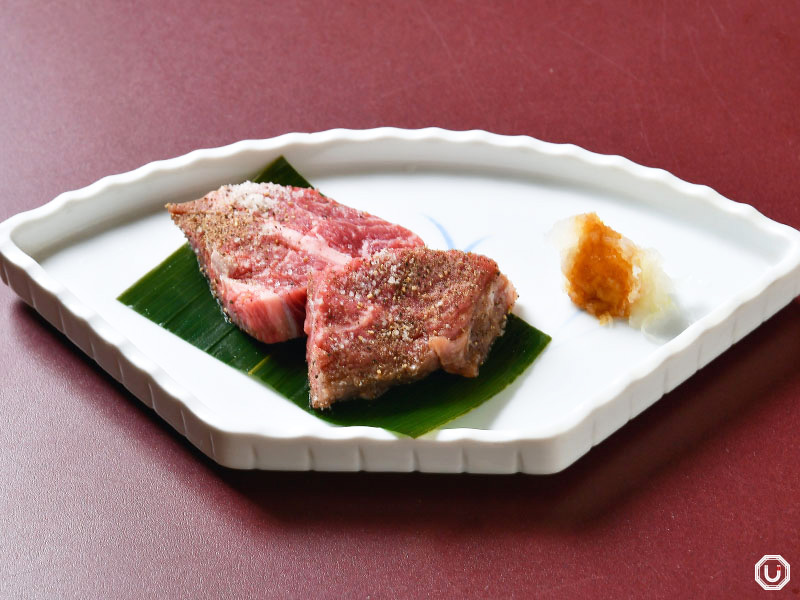
“福島牛,” Fukushima Beef
Be sure to grill the Fukushima Beef over the charcoal before eating. It’s recommended to sear just the surface and enjoy it rare.
This way, you can savor both the fragrant aroma of charcoal grilling and the rich flavor unique to premium wagyu.
Just be careful not to overcook it, as the tender meat can quickly become tough.
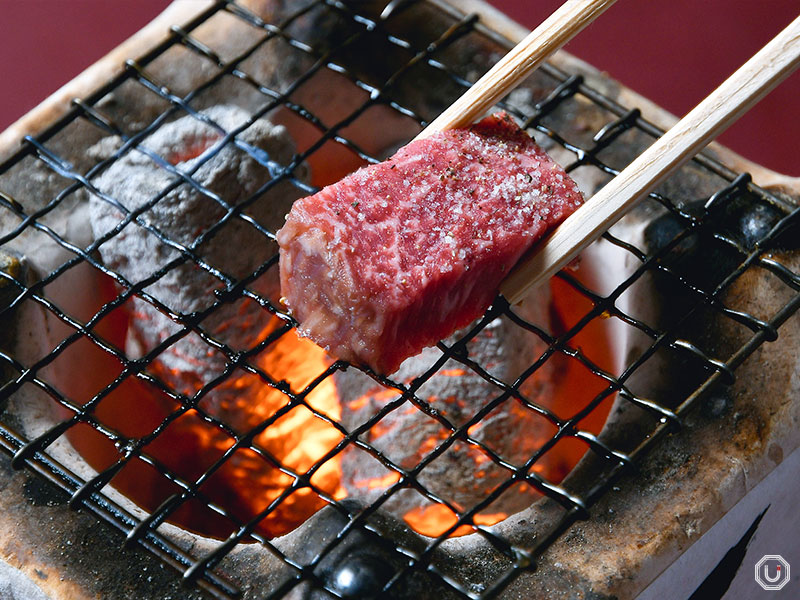
Next served is the “Deep-Fried Chicken Wings.”
Marinated in a homemade sauce passed down for over half a century and fried until fragrant, the wings are generously sprinkled with white sesame—symbolizing the hope of earning many “white stars” (white circles representing wins in sumo)—and are juicy in flavor.
Depending on availability, this dish may be substituted with a different fried item—please check when making your reservation.
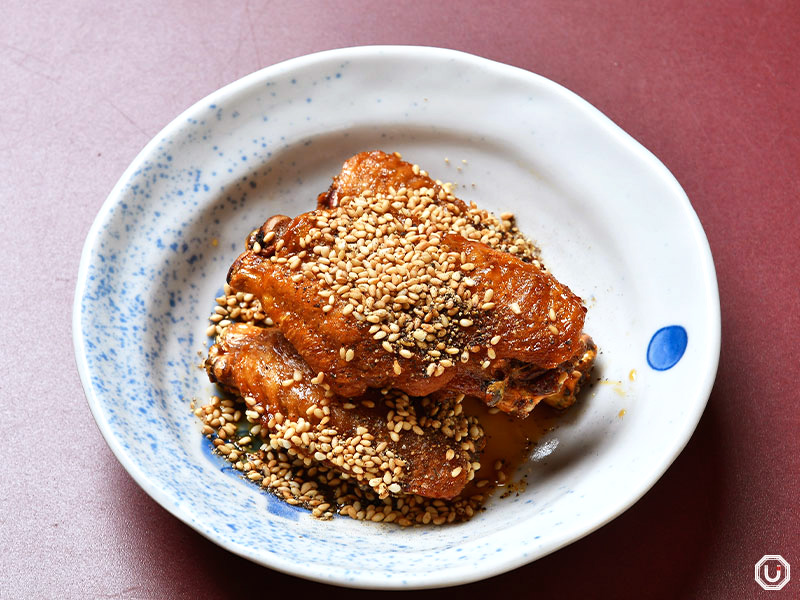
“手羽先揚げ,” Deep-Fried Chicken Wings
Flavorful chanko nabe steeped in tradition
Next comes the main dish: chanko nabe.
At Ryotei Tokibayama, there are two kinds to choose from—soy sauce-based “Shōyu Chanko” and miso-based “Miso Chanko.” Select whichever suits your preference.
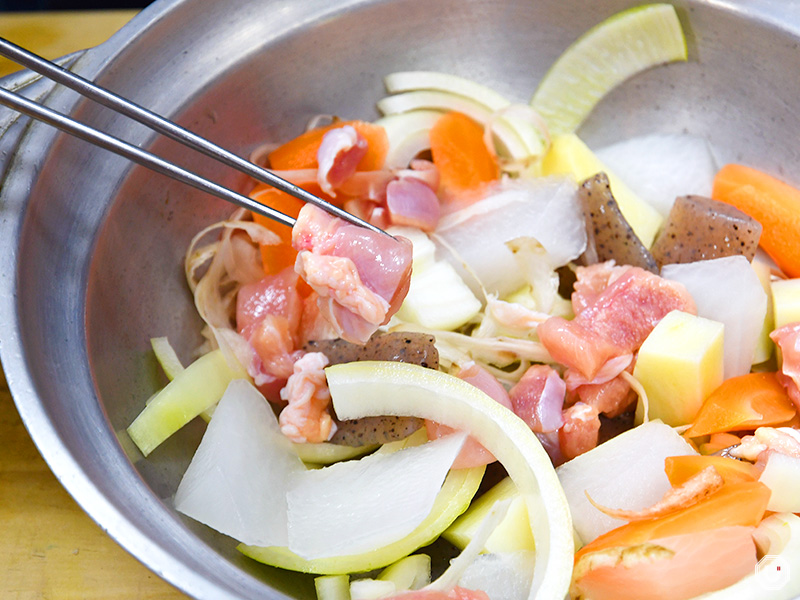
The Shoyu Chanko features chicken thigh and tsukune (chicken meatballs) as the main proteins, along with 15 types of seasonal vegetables like cabbage, carrot, onion, potato, shimeji and enoki mushrooms, and konnyaku (firm jelly made from konjac yam).
While there are no clear rules for ingredients, “chanko nabe with only one type of protein as the main ingredient was the traditional style eaten in sumo stables,” says Haruki.
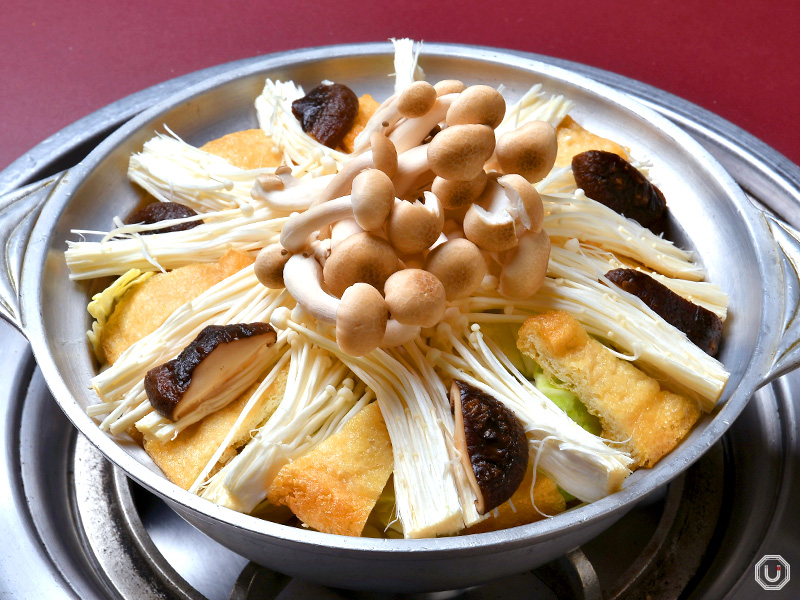
“正油ちゃんこ,” Shoyu Chanko (photo shows 2 servings)
At Ryotei Tokibayama, all chanko nabe are served pre-arranged in the hot pot.
The broth is made from a custom blend of soy sauce, mirin, and chicken stock. When simmered with a medley of vegetables, it develops a simple yet profound flavor.
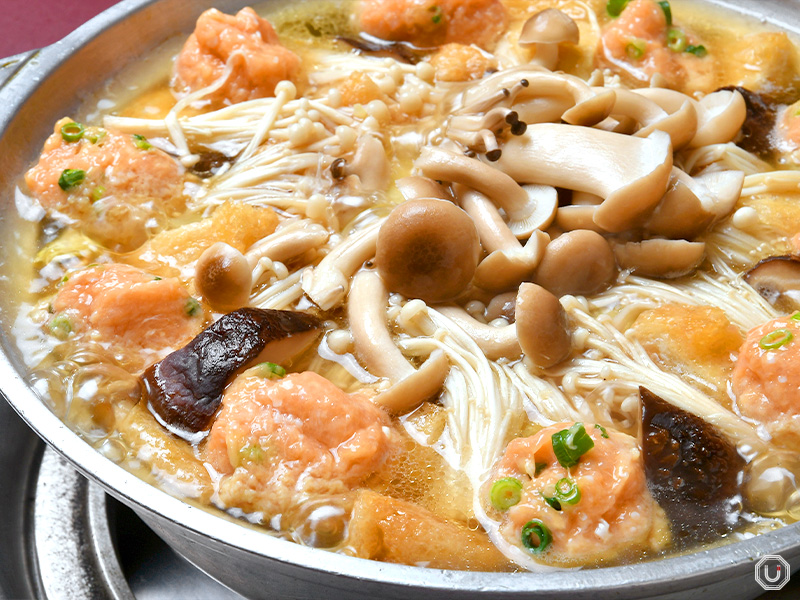
The restaurant’s proprietress and staff prepare and serve the hot pot, refilling your plate each time it’s empty—part of Ryotei Tokibayama’s signature hospitality.
This attentive service allows you to focus entirely on enjoying the food and conversation.
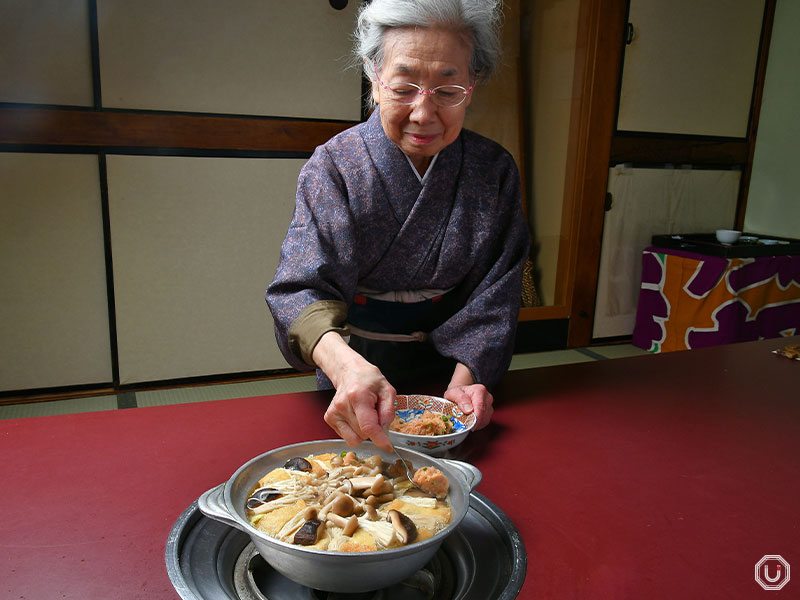
In Japan, it’s customary to finish a hot pot meal by adding rice or noodles to the leftover broth.
At Ryotei Tokibayama, both rice and udon are available.
If you choose rice, it’s mixed with a beaten egg to create a creamy zōsui (rice porridge). The remaining broth and egg combine for a mellow flavor.
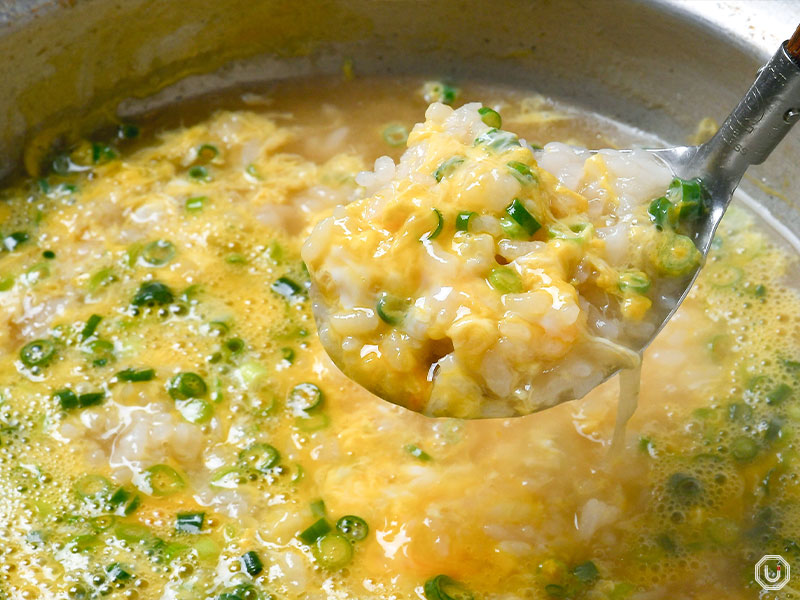
Rice porridge to finish
If you choose udon, the noodles are simmered in the remaining broth, soaking up all its savory goodness—an irresistible way to end the meal.
Both options allow you to enjoy the ingredients and soup to the very end without waste, providing outstanding satisfaction. Choose whichever suits your mood at the time.
Finally, the course concludes with a dessert.
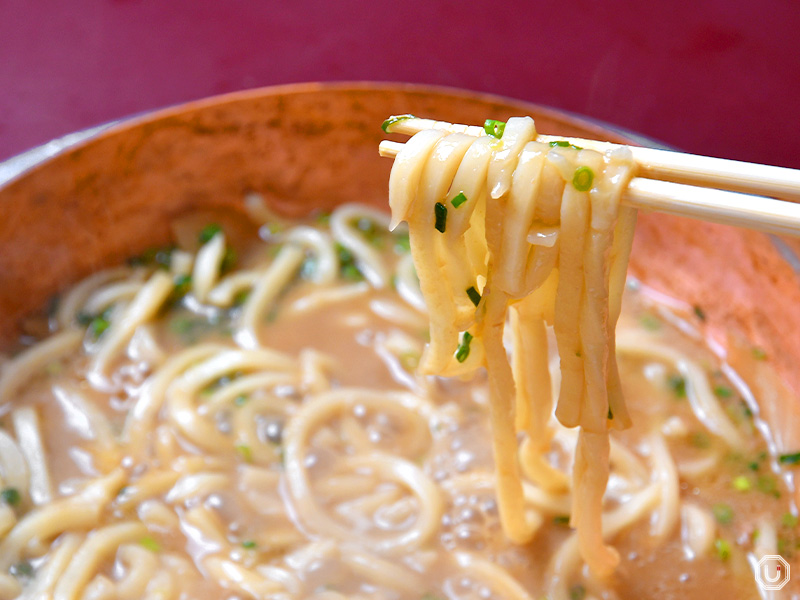
Udon to finish
Because sumo rules prohibit placing hands on the ground (a symbol of defeat), traditional chanko nabe avoided the use of four-legged animals like pork, instead favoring chicken—a two-legged animal whose hands (wings) don’t touch the ground—as the main protein.
However, as the dish became popular in ordinary households, the ingredients diversified.
Ryotei Tokibayama also offers a rich, flavorful Miso Chanko featuring pork as the main protein—another beloved option among guests.
Private dining with fine Japanese sake and cuisine
Chanko nabe, one of Japan’s traditional dishes, pairs excellently with sake.
At Ryotei Tokibayama, a menu featuring local sake from across Japan, with rare labels sometimes included.
If you choose the “Omakase Course with All-You-Can-Drink” starting from 16,500 JPY (tax included), you can enjoy unlimited beer, whiskey, shochu, and more to your heart’s content.
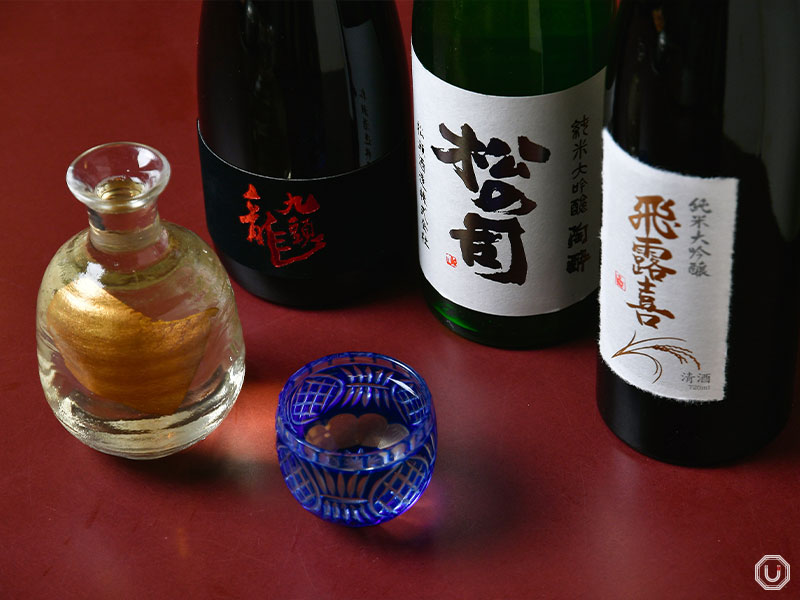
In addition to chanko nabe, you can also enjoy the luxurious “Tiger Pufferfish Course” where you can savor fugu (pufferfish) sashimi and hot pot, the “Tempura Course,” and many other options.
Spending time savoring Japan’s rich culinary culture in the private, atmospheric space of a charming traditional house is an experience that will stay with you.
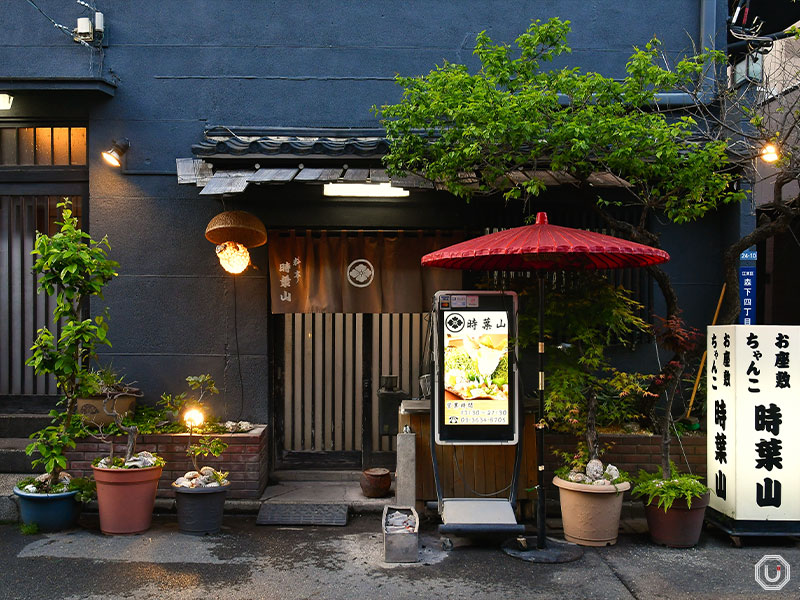
Information
| Store name | 料亭 時葉山 Ryotei Tokibayama |
|---|---|
| Address | 4-24-10 Morishita, Kōtō-ku, Tokyo
|
| Access |
Kikukawa Station 7-minute walk from Exit A2
Morishita Station 10-minute walk from Exit A4 |
| Phone number | 03-3634-8705 |
| Reservations | Accepted by reservation only Phone(for reservations, dial: 080-1105-9687) |
| Payment |
|
| Service charge/Table charge | 10% service charge |
| Hours | 17:00-21:30 |
| Closed | No fixed holidays Unscheduled holidays |
| Seating | 80 private dining room seats |
| Smoking | All seats are non-smoking |
| Official website | https://www.tokibayama.com/ |
| Other information |
|
※Menu contents, prices, store information, etc. are current as of May 2025.
